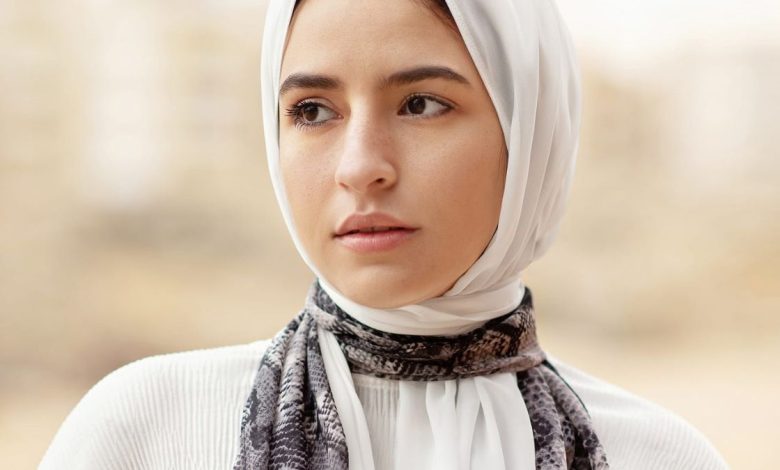Understanding Hijabhoojup: Need to Know About Cultural and Fashion Perspective

The hijab has long been a powerful symbol of identity and faith for millions of Muslim women worldwide. As fashion evolves, the way hijabs are styled also transforms, giving rise to new trends like “hijabhoojup.” This article delves into the cultural significance and fashion perspective of Understanding Hijabhoojup: Need to Know About Cultural and Fashion Perspective, exploring its origins, styles, and modern implications.
What is Hijabhoojup?
Hijabhoojup represents a fusion of traditional hijab styling with contemporary fashion elements. The term itself embodies a blend of modesty and modernity, showcasing how Muslim women articulate their identities through their attire. Hijabhoojup is characterized by its unique fabrics, colors, and designs, allowing for personal expression while adhering to the core principles of hijab.
Historical Context of Hijab
Understanding hijabhoojup requires a grasp of the historical context of the hijab itself. The concept of hijab is rooted in various cultures and religions, but in Islam, it signifies modesty, privacy, and morality. The Quran instructs both men and women to dress modestly, leading to various interpretations and styles of hijab across different cultures and communities.
Historically, the hijab has manifested in numerous forms, such as the khimar (a cape-like garment) and shayla (a long scarf). With globalization and the influence of Western fashion, the styling of hijabs has diversified significantly, giving rise to modern interpretations like hijabhoojup.
Cultural Significance of Hijabhoojup
Empowerment Through Fashion
For many women, hijabhoojup serves as a means of self-empowerment. It allows them to embrace their cultural identity while engaging with global fashion trends. The freedom to choose how to style their hijab enables women to express their personality and creativity, breaking away from traditional molds.
Bridging Tradition and Modernity
Hijabhoojup exemplifies the delicate balance between tradition and modernity. It honors the principles of modesty while integrating contemporary fashion elements. This fusion allows women to stay true to their beliefs while adapting to modern societal norms, showcasing the dynamic nature of cultural expression.
Community and Identity
The hijabhoojup trend fosters a sense of community among women who share similar values and experiences. Social media platforms, in particular, have created a global space where women can showcase their hijab styles, exchange tips, and support one another. This interconnectedness has given rise to a vibrant online culture centered around hijab fashion, breaking geographical barriers and uniting women from diverse backgrounds.
Fashion Perspective on Hijabhoojup
Diversity of Styles
The beauty of hijabhoojup lies in its diversity. Women can select from various styles, fabrics, and colors to express their individuality. Here are some popular hijabhoojup styles that have gained traction:
- Layered Hijabs: These involve combining different fabrics and lengths for a textured look that adds depth and interest.
- Printed Hijabs: Featuring floral, geometric, or abstract patterns, these hijabs bring vibrancy and personality to any outfit.
- Turban Styles: Wrapping the hijab around the head like a turban, this style often pairs well with bold accessories and statement pieces.
These diverse styles not only enhance personal expression but also encourage experimentation with new looks, allowing women to redefine their fashion statements.
Fabrics and Materials
The choice of fabric is crucial in the hijabhoojup aesthetic. Women often select materials based on comfort, climate, and occasion. Common fabrics include:
- Chiffon: Lightweight and flowy, perfect for creating layered looks that are both elegant and comfortable.
- Cotton: Breathable and versatile, making it ideal for everyday wear and casual outings.
- Silk: Luxurious and elegant, often reserved for special occasions where women want to make a statement.
The right fabric can elevate an outfit, enhancing both style and comfort.
Accessorizing Hijabhoojup
Accessories play a vital role in hijabhoojup, allowing for additional personalization. Women often incorporate headbands, pins, and brooches to complement their hijab styles. Here are some popular accessories:
- Headbands: These can add a chic touch, helping to secure the hijab while adding style.
- Brooches and Pins: Decorative pins can transform a simple hijab into a statement piece, adding sparkle and interest.
- Statement Earrings: Long earrings can draw attention to the face, balancing the overall look.
The right accessories can tie an outfit together, making it distinctive and stylish.
Social Media and the Rise of Hijabhoojup
Influencers and Role Models
Social media platforms like Instagram and TikTok have propelled the hijabhoojup trend into the spotlight. Influencers and fashion bloggers who wear hijabs have amassed significant followings, showcasing innovative styles and encouraging women to embrace their unique identities. These role models play a crucial role in promoting inclusivity and diversity within the fashion industry, challenging stereotypes and inspiring others to express themselves through their attire.
Hashtags and Community Building
The use of hashtags such as #hijabhoojup, #hijabfashion, and #modestfashion helps to create a sense of belonging among women. These online communities foster support and inspiration, enabling women to share their fashion journeys and celebrate their heritage. Platforms like Pinterest and TikTok have become valuable resources for discovering new styles and trends, encouraging creativity and self-expression.
Challenges and Misconceptions
Despite the positive aspects of hijabhoojup, challenges and misconceptions persist. Some of these include:
Stereotypes
Many individuals outside the Muslim community hold stereotypes about hijab-wearing women. These misconceptions often stem from a lack of understanding of the cultural significance of the hijab. For example, some may view hijab as a sign of oppression rather than a choice made by empowered women. Educating others about the diversity and empowerment represented by hijabhoojup is essential to dismantle these stereotypes and promote acceptance.
Fashion vs. Faith
Some critics argue that blending fashion with faith undermines the seriousness of hijab as a religious obligation. However, it’s crucial to recognize that fashion can coexist with faith, allowing women to express their beliefs while enjoying personal style. Many women find that their hijabhoojup choices reflect their spirituality and values, further enhancing their connection to their faith.
The Future of Hijabhoojup
As society continues to evolve, so will the interpretation of hijabhoojup. Future trends may include:
Sustainable Fashion
With growing awareness of environmental issues, sustainable fashion practices are gaining traction. Hijabhoojup could incorporate eco-friendly materials and ethical production processes, allowing women to make conscious choices while staying fashionable. This shift towards sustainability would resonate with younger generations who prioritize ethical consumption.
Technological Innovations
Advancements in technology may impact hijab fashion significantly. Virtual fitting rooms and augmented reality apps could help women experiment with different styles and fabrics from the comfort of their homes, revolutionizing the shopping experience. Brands that embrace technology to enhance customer experience will likely stand out in the competitive fashion market.
Global Influence
As the hijabhoojup trend gains global recognition, it may influence mainstream fashion. Designers may incorporate hijab styles into their collections, promoting diversity and inclusivity within the industry. Fashion weeks and events worldwide may feature hijab-wearing models, showcasing the beauty of modest fashion on prominent platforms.
Personal Stories and Testimonials
Celebrating Individual Journeys
Many women have shared personal stories about their journeys with hijabhoojup, highlighting the empowerment it brings. For instance, one woman might describe how discovering different hijab styles allowed her to feel more confident in her skin, while another might share how she connected with her cultural heritage through fashion.
Overcoming Challenges
Others discuss the challenges they faced, such as negative stereotypes or pressure to conform to certain styles. Through their stories, they emphasize the importance of resilience and authenticity in navigating their fashion choices while remaining true to their beliefs.
Conclusion
Hijabhoojup stands at the crossroads of culture and fashion, representing a powerful means of self-expression for women around the globe. It embraces diversity, encourages creativity, and fosters community among those who share similar values. As society continues to evolve, understanding the cultural and fashion perspectives of hijabhoojup becomes increasingly important in promoting acceptance and appreciation for different ways of life.
In a world where fashion can be both a form of expression and a means of connecting with one’s heritage, hijabhoojup is a testament to the resilience and creativity of women everywhere. Whether through vibrant colors, unique styles, or innovative fabrics, the journey of hijabhoojup continues to inspire and empower, reminding us that beauty and faith can coexist harmoniously. As more women embrace this trend, it will undoubtedly leave a lasting impact on the fashion landscape, encouraging greater inclusivity and understanding.





